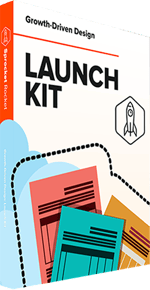Welcome back to our series on building a quality hiring process! If you’ve been following along, you know attracting the right talent is just the tip of the iceberg. The real challenge lies in effectively assessing candidates to ensure the best fit for your organization. Today, we’re diving into the nuances of candidate assessment, a critical step that can transform your hiring process from good to great.
Understanding the Importance of Effective Assessment
Let’s start by acknowledging a fundamental truth: the right hire can elevate your team, while the wrong one can lead to wasted resources and a disrupted workplace culture. So, how do we sift through many resumes and personalities to find that perfect match?
Step 1: Define Your Criteria
Before you even begin interviewing, take a moment to reflect on what success looks like for the role you’re trying to fill. What skills, experiences, and personal attributes would contribute to a stellar performance? Outline the qualifications that matter most, and ensure everyone involved in the hiring process understands these criteria. This way, you’re all on the same page and can assess candidates uniformly.
Step 2: Use a Variety of Assessment Methods
In a constantly evolving world, relying solely on interviews can be a disservice. Diversify your assessment methods to get a well-rounded view of each candidate. Here are a few techniques to consider:
- Behavioral Interviews: Ask candidates to share past experiences demonstrating how they’ve handled specific situations. This can reveal their problem-solving abilities and cultural fit.
- Skills Assessments: Depending on the role, consider practical tests or tasks that mimic job responsibilities. This can highlight the candidate’s technical skills and work style.
- Personality Assessments: Tools like the Myers-Briggs Type Indicator or the DISC assessment can provide insights into candidates’ personalities and how they might mesh with your team.
Step 3: Foster an Open Dialogue
Remember that assessment is a two-way street when you’re in the interview room. Encourage candidates to ask questions about the role and your company. This helps them evaluate whether they’re a good fit and offers you a glimpse into their priorities and values. An open dialogue can lead to deeper insights than a one-sided question-and-answer session.
Step 4: Involve Your Team
Hiring should never fall solely on one person’s shoulders. Involve a diverse group of your team members in the assessment process. Different perspectives can provide a more holistic view of the candidate’s potential. Consider assembling a panel interview, where various members assess and provide feedback collaboratively.
Step 5: Reflect and Decide
After the interviews and assessments, take the time to reflect on each candidate’s performance against your defined criteria. This is where having clear notes and feedback from the team becomes invaluable. Discuss the strengths and any red flags observed during the process. Remember, it’s about finding the right fit—not just someone who checks all the boxes.
Making Data-Informed Decisions
Effective assessment is about more than just gut feelings; it’s about making informed decisions based on data collected throughout the process. By defining your criteria, using varied assessment methods, fostering dialogue, involving your team, and being reflective, you can significantly enhance the quality of your hiring.
We’re just getting started—next, we’ll show you how onboarding can make or break your hiring impact.

July 1, 2025


